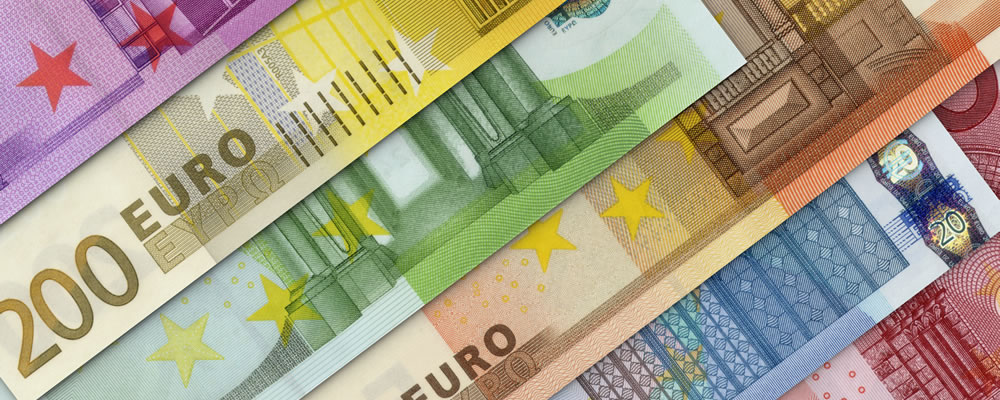- Unexpectedly improved Eurozone inflation boosted Euro demand – ECB considered less likely to cut interest rates in response to bullish data
- Eurozone Manufacturing PMIs undermined confidence – Single currency trended lower as signs of underlying weakness remained
- Pound slumped as UK manufacturing contraction revealed to be sharper-than-expected – Odds of imminent BoE rate cut increased
- EUR USD exchange rate fails to strengthen on the back of weaker US data – ISM Manufacturing Index provided further evidence of slowdown
Weaker US Manufacturing Fails to Boost EUR USD Exchange Rate
Although the ISM Manufacturing Index was found to have weakened further than forecast in July this failed to substantially weigh down the US Dollar. Confidence in the Euro, meanwhile, remained muted thanks to persistent worries over the domestic banking sector. As a result the EUR USD exchange rate was trending narrowly in the region of 1.1176 towards the close of Monday’s European session.
(Previously updated at 10:38 on 01/08/2016)
Confidence in the outlook of the Eurozone economy weakened once again on Monday, with the EUR USD exchange rate trending lower thanks to signs that the recovery of the currency union remains unbalanced.
Soft Eurozone Manufacturing PMIs Prompted Euro (EUR) Exchange Rate Downturn
The appeal of the Euro (EUR) was boosted ahead of the weekend by a raft of stronger-than-expected Eurozone ecostats. Both the second quarter GDP and July Consumer Price Index figures bettered forecasts to point towards a more robust domestic economy, encouraging investors to pile back into the single currency on Friday. An unexpected uptick in domestic inflationary pressure was seen to reduce the likelihood of the European Central Bank (ECB) moving away from its current ‘wait and see’ mentality, suggesting that earlier monetary loosening has been having a positive impact. While there are still worries that this progress could be reversed by ongoing economic and political uncertainty in the wake of the Brexit vote, that was not enough to prevent the Euro trending sharply higher against rivals.
Demand for the single currency was somewhat muted on Monday morning, with markets generally unimpressed by the finalised Eurozone Manufacturing PMIs. While both Germany and the Eurozone as a whole saw their initial results revised higher this failed to offer any particular encouragement to investors, as this nevertheless confirmed a weakening in sector activity on the month. Even though the measure remained in expansion territory the picture was not overly positive, as Chris Williamson, Chief Economist at Markit, noted:
‘Dig deeper beyond the headline numbers and more worrying pictures appear. Expansions in output and employment are clearly being driven to a large extent by surging growth in Germany, while growth has almost stalled in both Italy and Spain and contractions are being seen in France and Greece.’
EUR GBP Exchange Rate Boosted after Weaker-than-Forecast UK Manufacturing PMI
Friday saw some mixed movement for the Pound (GBP), as post-Brexit data contrasted more positive figures from the pre-referendum period. The outlook of the UK economy was naturally dented by a sharp slump in the GfK Consumer Confidence Survey for July, which dropped from -1 to -12 as a result of recent uncertainty. This poor showing renewed the downside pressure on Sterling, although the currency did later attempt to rally on the back of stronger consumer credit figures for June. Nevertheless, with mortgage approvals having fallen in the run-up to the Brexit vote there was ultimately little cause for confidence in the Pound.
Calls for the Bank of England (BoE) to cut interest rates on Thursday received further fuel in the shape of the finalised UK Manufacturing PMI for July. Rather than showing a positive revision from the flash result, the figure instead plunged further into contraction territory, sliding to 48.2 from June’s bullish 52.1. This suggested that the negative economic hit from Brexit was more severe than initially thought, leading the Pound to weaken further against its peers.
US Dollar (USD) Forecast to Weaken on Lacklustre Manufacturing Data
Disappointment with the monetary easing of the Bank of Japan (BoJ) initially helped to boost the ‘Greenback’ (USD), with the decline of its safe-haven rival offering additional support ahead of Friday’s US data. However, the US Dollar was unable to maintain its resultant gains for long thanks to the relative strength of the Euro and some particularly discouraging domestic data. Market expectations had been for the second quarter US GDP to climb substantially from 1.1% to 2.6%, leading to a decidedly bearish reaction when the figure instead clocked in at 1.2%. As the latest Personal Consumption and University of Michigan Confidence Index results also failed to live up to forecast this naturally prompted the Euro to US Dollar (EUR USD) exchange rate to trend higher.
Although it seems increasingly doubtful that the Federal Open Market Committee (FOMC) will choose to return to its monetary tightening cycle before the end of the year that did not prevent the US Dollar from regaining some ground at the start of the week. The mood towards the ‘Greenback’ could well soften in response to the latest manufacturing data, however, with forecasts pointing towards further weakening in sector activity. If the ISM Manufacturing Index reinforces the suggestion that the world’s largest economy is slowing then the EUR USD exchange rate is likely to benefit strongly.
Current EUR, GBP, USD Exchange Rates
At the time of writing, the Euro to Pound (EUR GBP) exchange rate was trending higher around 0.8455, while the Euro to US Dollar (EUR USD) pairing was trending narrowly in the region of 1.1171.



